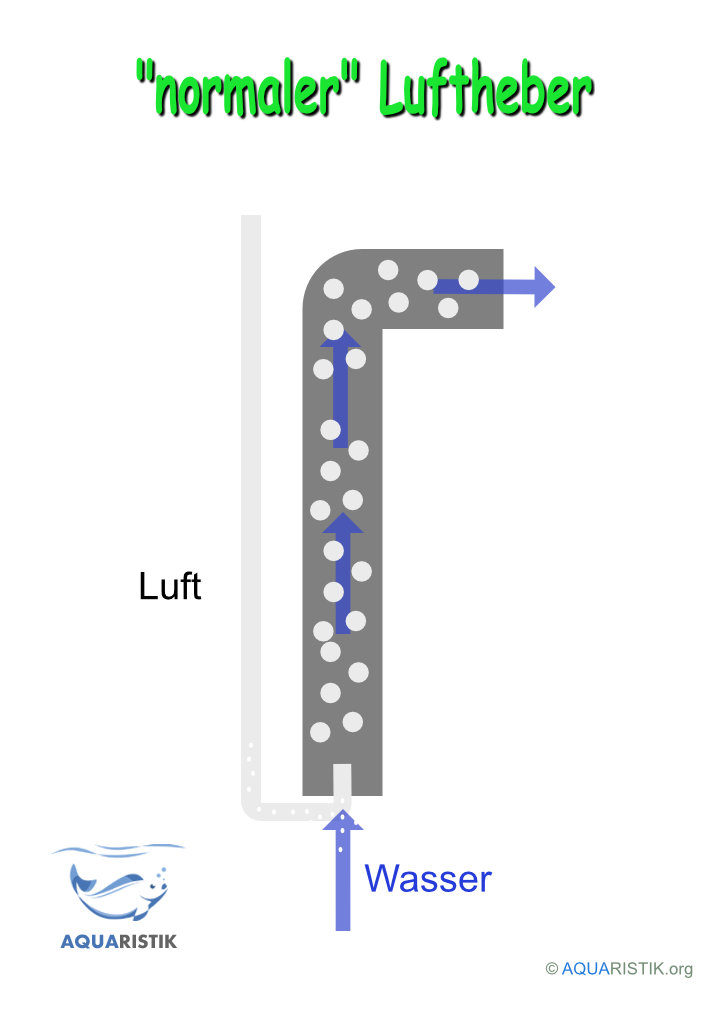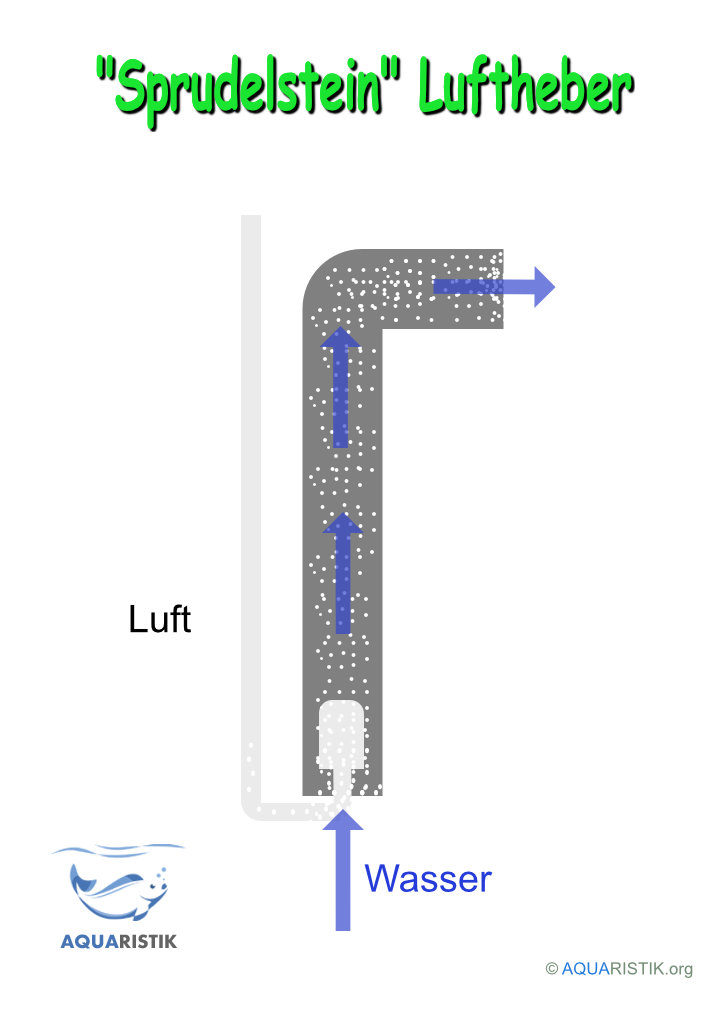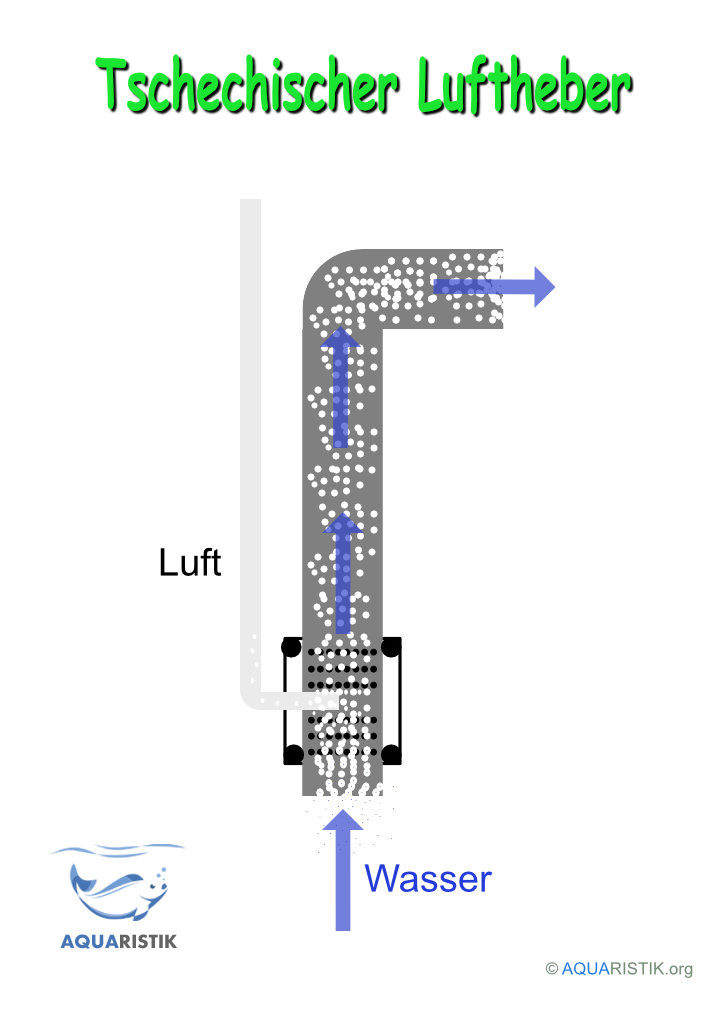airlift in the Aquaristics: Using an air lifter in the aquarium can be done especially in conjunction with a Hamburg mat filter HMF be very useful. We have already explained how an air lifter works in the exact explanation based on the model of the Czech air jack described in more detail. Today we show the different types of air lifters and what each one is for advantages and disadvantages have. There are basically three models of air lifters. Be it the "normal air lifter", the air lifter with an air stone and the Czech air lifter. But where is the difference now?
Normal air lifter
Let's start with the conventional air lifter, which is also made quite quickly. Basically, only one thing is needed here riser pipe and a Bow. One more silicone tube and diaphragm pump and the air lifter is ready.
Of course there are still some variables, be it the riser pipe diameter or the length of the riser pipe. And of course the pump performance.
For risers, diameters between 8-12mm seem to be normal. The silicone hoses for the air supply usually have a diameter of 4/6 mm, which is also hydraulically decisive for how much air is available.
Let us now come to the decisive disadvantages, including ours sketch should show. The relatively large air bubbles that form here ensure an even flow of water. Most of the time, the water surges back into the pool. In addition, the conveying capacity is not optimal. They also cause a lot of noise as far as noise is concerned, since the large air bubbles bubble quite a lot.
While light and easy to build, it certainly isn't the best when it comes to airlifts. We advise using the other two models here.

Air lifter with air stone
Now let's move on to an improvement in the air lift compared to the first model. As you should see on our sketch, this is a modification of the normal air jack. Basically, the design is exactly the same, except that an air stone is mounted on the outlet of the air hose. This is used to make small air bubbles out of the large ones in order to improve effectiveness. It can be assumed that the air bubbles are reduced by up to half as a result.
A surge of water should therefore be avoided. In addition, the pumping capacity is better, since the water is no longer pulled strongly, but can be transported upwards more slowly.
Unfortunately, there's a downside here too, especially with the air jacks for the Nano aquarium. There you will find it difficult to find an air stone that fits into the riser pipe of the air lift. From a certain diameter, however, the chances are good, or you can build your own bubble stone. Of course you can also change the dimensions of a large one. If you don't want to work with a bubble stone, you have other options. These are united in the following Czech air jack.

Czech air jack
We don't want to say much about the Czech air jack at this point, because there is already a comprehensive article that describes exactly how it works.
Basically, the principle of the bubble stone is used here. It's about reducing the size of the air bubbles that push the water up. This is what happens in the bubble stone.
With the Czech air lifter, the silicone hose is routed into the riser pipe from the side. Above it is a cuff which creates a jerk. The air then enters the riser pipe through many small holes. Small air bubbles form through these holes, which should usually be 1,5 mm in diameter. These produce the desired function again.

More information about the Czech air jack can be found here:
You can also find a detailed description of the diaphragm pumps here:
We have also compiled the necessary calculations:



